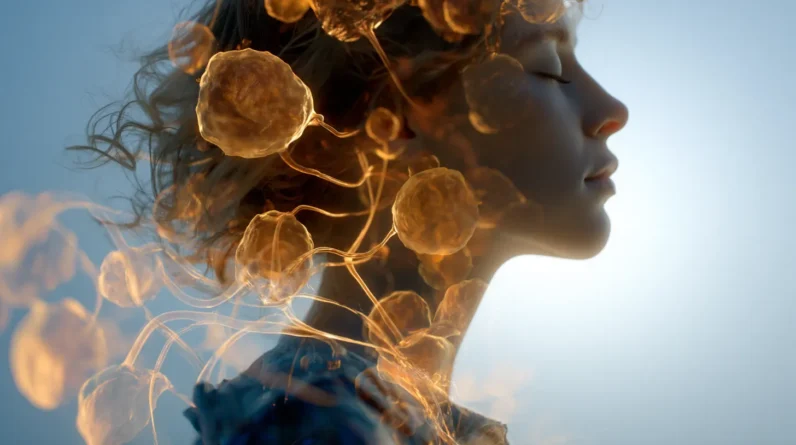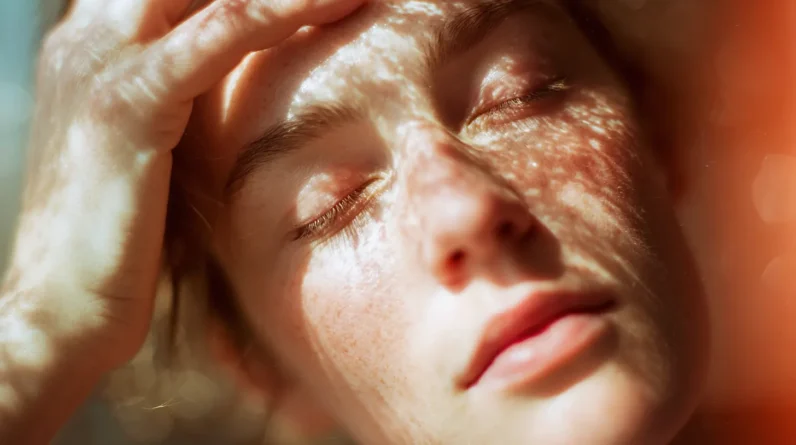
Welcome to the world of guided imagery and visualization, where the power of your mind can enhance your overall wellness. In this guide, we will explore the techniques and strategies to help you master the art of utilizing guided imagery and visualization for your well-being.
Guided imagery involves creating a detailed mental image of a specific scene or scenario, while visualization is the process of imagining desired outcomes. By engaging all your senses and immersing yourself in these mental images, you can tap into the mind-body connection and experience profound relaxation and rejuvenation.
Throughout this journey, we will discuss how to get started with guided imagery, incorporate visualization techniques, create personalized scripts, and practice regularly to enhance your overall wellness. So, let’s delve into the world of guided imagery and visualization and unlock the potential of your mind for optimal well-being.
Key Takeaways
– Guided imagery and visualization can enhance overall wellness and promote relaxation.
– Utilizing audio recordings or guided imagery programs can help establish a personalized practice routine.
– Incorporating visualization techniques can deepen relaxation, reduce anxiety, and improve pain management.
– Creating a personalized visualization script with specific details and sensory attributes can maximize the benefits of guided imagery.
Getting Started With Guided Imagery
To begin your journey with guided imagery, it is essential to establish a personalized practice routine. Guided imagery is a powerful tool that can enhance your overall wellness by promoting relaxation and reducing stress. By incorporating visualization techniques, you can tap into the power of your imagination to create a peaceful place in your mind.
To get started with guided imagery, find a quiet and comfortable space where you can relax without distractions. Close your eyes and take a few deep breaths to center yourself. As you begin to relax, imagine yourself in a serene and tranquil environment. It could be a beautiful beach, a lush forest, or any place that brings you a sense of peace and tranquility.
To enhance the experience, you can use audio recordings or interactive guided imagery programs that provide guided instructions. These resources can help you deepen your relaxation and guide you through the visualization process.
As you practice guided imagery regularly, you will notice the positive effects it has on your overall well-being. It can help you manage stress, improve your mood, and promote a sense of inner calm. So take the time to incorporate guided imagery into your wellness routine and experience the transformative power of visualization.
Incorporating Visualization Techniques
One effective way to incorporate visualization techniques for your wellness is by utilizing a variety of sensory details. Guided imagery and visualization techniques have been widely recognized as powerful tools for promoting relaxation, reducing stress levels, and enhancing overall mental health. By incorporating sensory details into your visualization practice, you can deepen your experience and maximize its benefits.
When practicing visualization, engage all your senses to create a vivid and realistic mental image. Imagine the sights, sounds, smells, tastes, and textures of your desired peaceful setting. For example, if you’re visualizing a serene beach, imagine the sound of waves crashing, the smell of saltwater in the air, the feeling of warm sand beneath your feet, and the taste of a refreshing tropical drink. By incorporating these sensory details, you can enhance the effectiveness of the relaxation technique.
To make the most of visualization, consider using imagery audio recordings or guided meditation apps. These resources provide step-by-step guidance and help facilitate a deep state of relaxation. By listening to these recordings, you can effortlessly immerse yourself in your visualization practice and reap the benefits of reduced anxiety and improved pain management.
Visualization techniques into your wellness routine can have a profound impact on your overall well-being. By using sensory details and utilizing resources like imagery audio recordings, you can enhance the effectiveness of your practice and achieve a greater sense of tranquility and balance in your life.
Creating Your Personal Visualization Script
Sensory details is essential when creating your personal visualization script for maximizing the benefits of guided imagery and visualization techniques in promoting relaxation and enhancing overall mental health. Visualization is a powerful tool that allows you to create a vivid mental image of a peaceful setting, such as a tranquil beach or a serene meadow. Adding sensory attributes, such as the sound of a trickling stream or the smell of the ocean, can make your visualization more immersive and engaging.
When developing your personalized script, it is important to include specific details that resonate with you. Think about what elements bring you a sense of calm and tranquility. Perhaps it’s the feeling of warm sand beneath your feet or the gentle breeze caressing your skin. By incorporating these details, you can deepen the experience and make your visualization script more meaningful to you.
To enhance relaxation and tranquility during your visualization practice, consider incorporating a path within your scene. This path can serve as a metaphor for your journey towards inner peace and self-discovery. As you imagine yourself walking along this path, take slow, deep breaths and allow yourself to fully immerse in the beauty and serenity of your visualization.
Regular practice is key to reaping the full benefits of your visualization script. Treat it as a mindfulness meditation, dedicating time each day to engage in this practice. With consistent use, your visualization script will become a powerful tool for relaxation, stress reduction, and overall wellness. So, take a deep breath, create your personal script, and embark on a journey towards a calmer mind and a more balanced life.
Practicing Guided Imagery for Relaxation
Guided imagery into your daily routine, you can experience deep relaxation and cultivate a sense of calm and tranquility. Guided imagery is a powerful technique that allows you to use your imagination to create a peaceful mental state. To practice guided imagery for relaxation, find a comfortable place to sit or lie down and close your eyes. Take a few deep breaths, allowing your body to relax with each exhale.
As you begin to relax, start visualizing a serene setting that brings you a sense of peace and tranquility. It could be a beautiful beach, a peaceful forest, or a cozy cabin by a lake. Imagine yourself being fully present in this scene, taking in the sights, sounds, and smells. Notice the details and allow yourself to become immersed in the experience.
To deepen your relaxation, imagine a path within the scene that leads you to a state of even greater calmness. As you walk along this path, feel the tension melting away from your body and mind. Embrace the stillness and serenity that surrounds you. Take this time to let go of any worries or anxieties that may be weighing you down.
Practicing guided imagery regularly can have profound effects on your overall wellness. It can reduce stress levels, improve emotional well-being, and enhance focus and concentration. Additionally, it can support better sleep quality and serve as a complementary technique for managing pain and anxiety.
Remember to approach the practice with an open mind and a willingness to explore the depths of your imagination. With each session, allow yourself to fully surrender to the experience and embrace the calm that comes with it. Take deep breaths, let go of any distractions, and allow the power of guided imagery to guide you towards a state of deep relaxation and tranquility.
Enhancing Your Wellness With Daily Visualization
Daily visualization is a transformative practice that can greatly enhance your overall wellness and mental well-being. By incorporating guided imagery and visualization into your daily routine, you can experience a multitude of benefits such as relaxation, mindfulness, and stress reduction. Visualization is a powerful tool that allows you to create detailed mental images of peaceful settings, redirecting your attention away from stress and towards a more positive focus.
Engaging in daily visualization exercises promotes relaxation by cultivating a relaxed detachment from your thoughts and sensations. As you immerse yourself in the vivid imagery of your mind’s eye, you create a sense of calm and tranquility, providing a respite from the demands of daily life. This practice can help you achieve a state of deep relaxation, which is essential for managing stress and promoting mental health.
Daily visualization also enhances mindfulness and meditation. By consistently practicing visualization, you develop the ability to focus your attention and become more present in the current moment. This heightened sense of mindfulness allows you to fully engage with your surroundings and experience life more fully.
Regular practice has been shown to improve sleep quality, manage pain, and reduce anxiety. By visualizing positive outcomes and cultivating a positive mindset, you can enhance your overall wellness and create a foundation for a healthier and happier life.
Conclusion
Guided imagery and visualization into your wellness routine can have a profound impact on your overall well-being. By engaging all your senses and immersing yourself in an imaginary scene, you can experience a sense of peace and relaxation. Regular practice of guided imagery can provide long-term benefits for your mental and emotional health. So take a few minutes each day to escape into your own personal oasis and enhance your wellness through the power of visualization.






